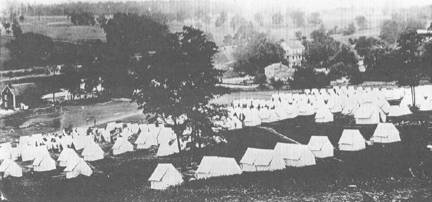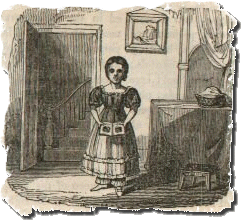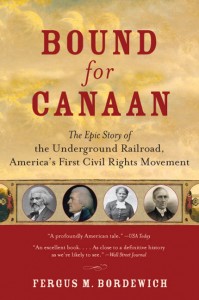
The Shelling of Carlisle occurred on July 1, 1863, even as the Battle of Gettysburg raged to the south.
Alabama soldier Elihu Wesley Watson arrived in Carlisle, Pennsylvania in the summer of 1863 as part of the Army of Northern Virginia’s shocking invasion of Pennsylvania –the one that culminated with the Battle of Gettysburg (July 1-3, 1863). While he was on brief occupation duty in Carlisle at the end of June, Private Watson spent some time talking to the president of Dickinson College (Herman Johnson), a man he then described in a subsequent letter as “an unmitigated abolitionist and a bitter enemy to the south,” with “principles… as bad as Wm. H Seward’s.” Watson’s fascinating account from the occupation of Carlisle was not an isolated bit of first-hand testimony. While often overlooked in classroom studies of the great battle, the primary sources describing the days leading up to confrontation at Gettysburg offer rare and very teachable glimpses into the nature of the war and especially into a deeper understanding of the interactions between Confederate soldiers and Northern civilians.
 For this post, I have assembled available digitized primary sources from the House Divided Project, the Dickinson College Archives, the Cumberland County Historical Society and from my book, The Confederate Approach on Harrisburg (2012). Featured below are accounts that describe a series of little-known skirmishes and events from the 1863 invasion, including the Confederate occupation of Carlisle. Of special interest are the stories of Samuel Hillman, a Dickinson professor who debated Confederate officers about slavery, and recollections from Dickinson alumni and Confederate officers Richard Beale and Richard Shreve who were among the Confederate troops responsible for shelling Carlisle on the evening of July 1-2. I created this post originally in the summer of 2018, but we will keep adding materials to it as they become available. Feel free to make your own suggestions or contributions using the comment box (“Leave A Reply”) below.
For this post, I have assembled available digitized primary sources from the House Divided Project, the Dickinson College Archives, the Cumberland County Historical Society and from my book, The Confederate Approach on Harrisburg (2012). Featured below are accounts that describe a series of little-known skirmishes and events from the 1863 invasion, including the Confederate occupation of Carlisle. Of special interest are the stories of Samuel Hillman, a Dickinson professor who debated Confederate officers about slavery, and recollections from Dickinson alumni and Confederate officers Richard Beale and Richard Shreve who were among the Confederate troops responsible for shelling Carlisle on the evening of July 1-2. I created this post originally in the summer of 2018, but we will keep adding materials to it as they become available. Feel free to make your own suggestions or contributions using the comment box (“Leave A Reply”) below.
Primary Sources – Skirmishes

Construction of the defenses near Harrisburg (Frank Leslie’s Illustrated Newspaper, July 4, 1863, House Divided Project)
Confederate Occupation of Carlisle – June 27-28, 1863
- Campbell Brown account (Confederate Staff Officer)
- Samuel Dickinson Hillman account (Dickinson professor) – account for The Methodist, July 18, 1863
- Charles Himes Letter and Diary (Civilian)
- Jedediah Hotchkiss Letter (Confederate map-maker)
- Henry London recollection (32nd North Carolina)
- Robert Park recollection (12th Alabama)
- Leonidas Polk Letter (43rd North Carolina)
- Confederate Supply Requisition, June 27, 1863
- “General Orders No. 72” posted in Carlisle, June 27-30, 1863
- William J. Underwood Letter (4th Georgia) – camps on the Dickinson College campus (Atlanta History Center)
- Elihu Wesley Watson Letter (6th Alabama) – mentions “a long conversation” with Dickinson College President Herman Johnson
- Young Girl’s Pocket Diary, June – July, 1863, CCHS (transcribed by Frank Kline) –The unknown young girl wrote on Monday, June 29 that, “The Rebels are going in every house and stealing all they can”
Confederates in York and Wrightsville – June 27-30, 1863
- Maj. Gen. Jubal Early’s memoir (Confederate)
- Newspaper account of the occupation of York (Civilian)
Battle of Sporting Hill – June 30, 1863
- George Wingate (Union)
- Report of Landis’s Philadelphia Battery (Union)
Shelling of Carlisle – July 1-2, 1863
- Richard L.T. Beale profile and account (Confederate, Dickinson Class of 1838)
- George W. Beale (son of RLT Beale) letter (Confederate)
- Theodore S. Garnett account (Confederate)
- Report of Landis’s Philadelphia Battery (Union)
- Fitzhugh Lee (Confederate)
- Anna Fosdick recollection (Civilian)
- Charles Godfrey Leland memoir (Union)
- Isaac Harris diary (U.S. Sanitary Commission) – took shelter “under the lee of the jail wall” during the shelling
- C. Stuart Patterson account (Union) – wounded during the shelling
- Charles Schaeffer Diary (Union)
- Richard Southeron Shreve account (Confederate, Dickinson Class of 1860)
- John Keagy Stayman letters (Civilian) – Dickinson College as a hospital
- George Wingate (Union)

A Confederate artilleryman, Richard Southeron Shreve (Class of 1860), “pointed out the various localities” in his old college town for Confederate cannons to aim at. (House Divided Project)
Primary Sources – Union
- “A Word to Pennsylvania”: New York Times column criticizing Pennsylvanians’ response to the invasion.
- Isaac Harris diary (U.S. Sanitary Commission)
- John Lockwood memoir (23rd New York State National Guard)
- George Wingate history (22nd New York State National Guard)
Primary Sources – Confederate
- “Gen. Jenkins’ Brigade” Newspaper account (Chronicling America)
- Herman Schuricht Diary (14th Virginia Cavalry)
- William Sillers Letter (30th North Carolina Infantry)
Primary Sources – Civilian
- Anonymous Letter from Cumberland County resident
- “Behavior of Our Citizens Under Rebel Fire” – Carlisle Herald account
- “Boyhood Memories of the Civil War” – James Sullivan account
- “Citizens of the Cumberland Valley” – recruitment poster, July 3, 1863
- Culver Family Correspondence – Hanna Culver’s July 9, 1863 letter detailing the occupation and shelling, and her brother Joseph Culver’s letter of concern for their father.
- Mary Johnson Dillon – (daughter of Dickinson College President Herman Johnson)
- George Chenoweth Letter – Carlisle civilian’s account
- Conway Hillman letter – son of Prof. Samuel D. Hillman, recalls the summer of 1863
- Jacob Hoke – Chambersburg civilian
- “Rebel Occupation of Carlisle” – Carlisle newspaper account
- Thomas Griffith Letter – Carlisle civilian
- Theodore M. Johnson account – (son of Dickinson College President Herman Johnson)

 The National Park Service boasts an
The National Park Service boasts an 
 Understanding family life in the 19th century necessitates a look at what was popular with children at the time.
Understanding family life in the 19th century necessitates a look at what was popular with children at the time. 








